The Red label Rose Summer from Ethiopia? Introduction to the Flavor characteristics of Hongbiao Rosa Coffee beans in Ruoxia Village
When the Panamanian rose summer is famous in the world, it also fascinates many people, and the manager of the rose summer village manor introduced in front street today is a man who devoted himself to the cause of cultivating coffee for rose summer coffee.
Guoxia Village Manor
In 2007, documentary director Adam Overton and photographer wife Rachel Samuel came into contact with the Gera Coffee Forest in the Bench-Maji region of Ethiopia while filming a documentary about Ethiopian coffee for the Ethiopian government. In the process, they were not only reacquainted with the great land of Ethiopia, but also came up with the idea of setting up their own coffee estate and brand.
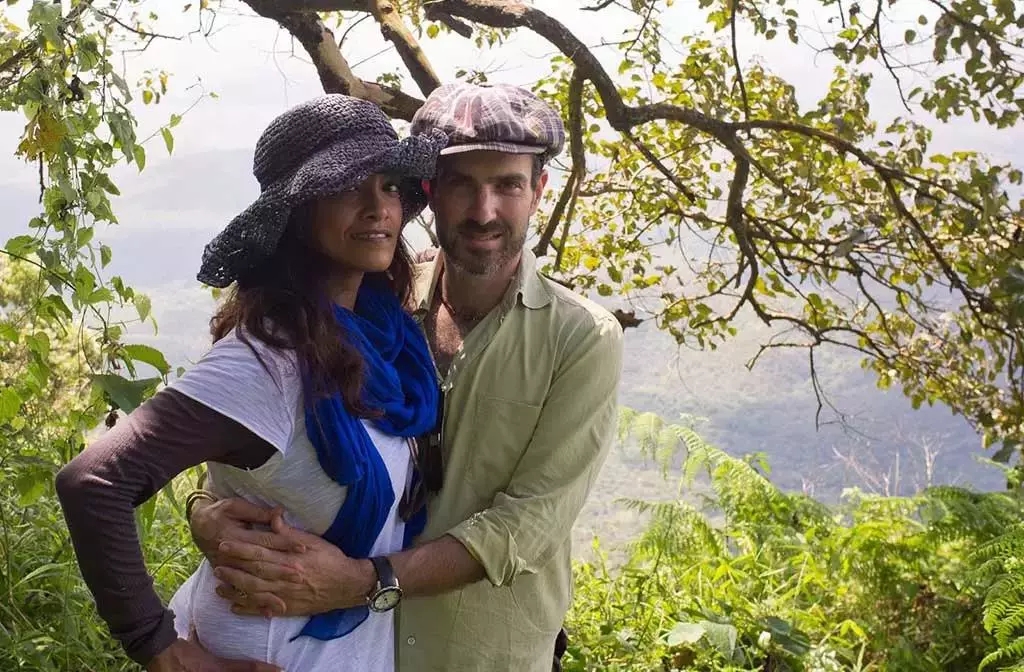
In 2009, they were lucky enough to meet the famous mule owner, BOP judge WillemBoot, and WillemBoot's idea provided an opportunity for the Overton couple to return to Ethiopia to find the birthplace of Rosa Xia.
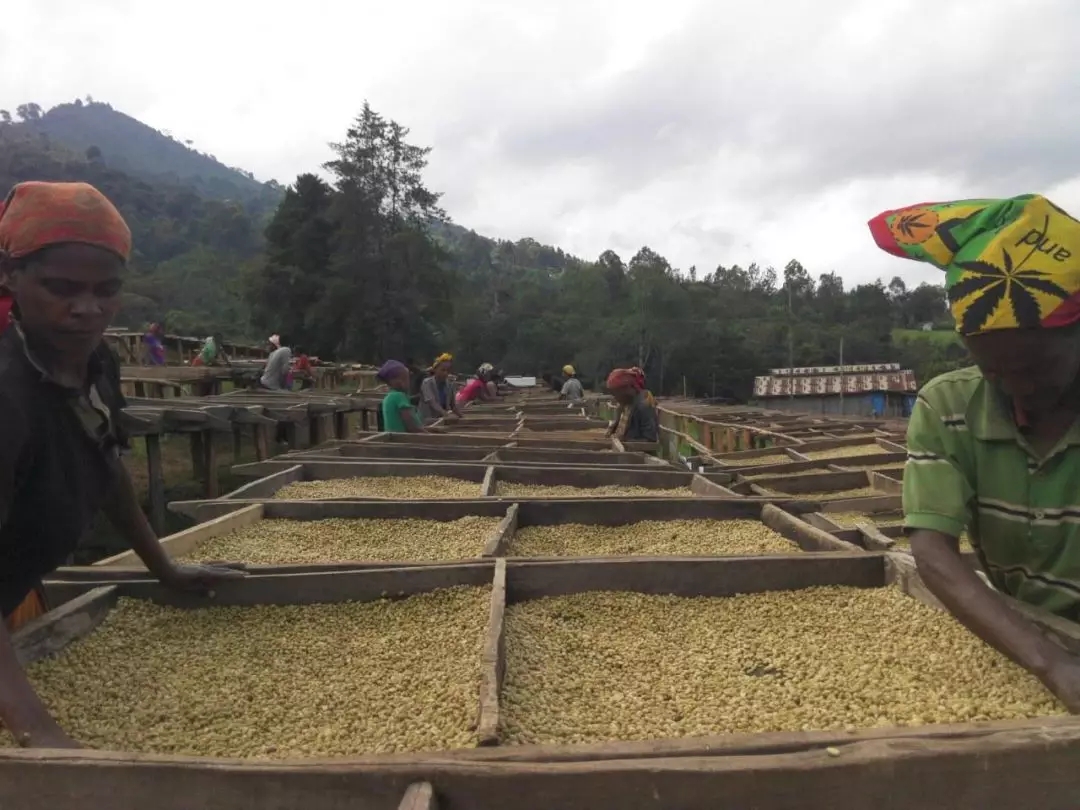
Finally they came to Banchi Magi, an area in southwestern Ethiopia near South Sudan, where many places are known as the village of Geisha and where primitive roses are most likely to be found. When they arrived in 2011, there was nothing in the manor.
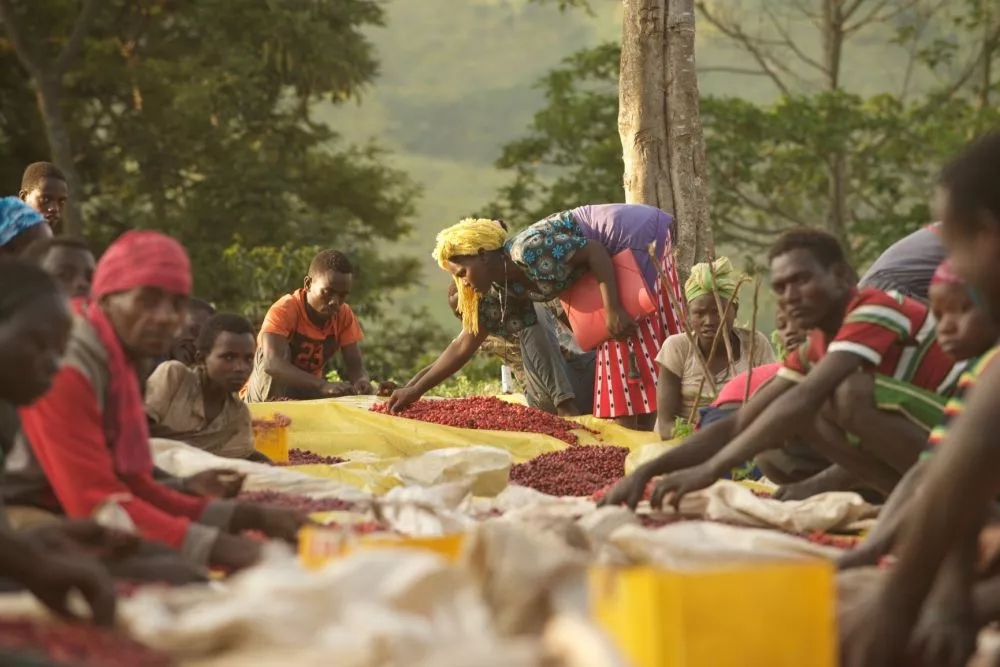
Adam followed Willem Boot to explore the forest around the manor and found a variety of wild tree species in a jungle magically surrounded by a thick forest. Later they learned that this was the place where the rose species were first found in the Gori Geisha forest. So they collected seeds from native rose trees, screened them, and planted them in Rosa Village. They decided to build the estate here and name it Geisha Village Coffee Estate, a 475-hectare coffee farm about 12 miles from the Gori Gesha Forest.
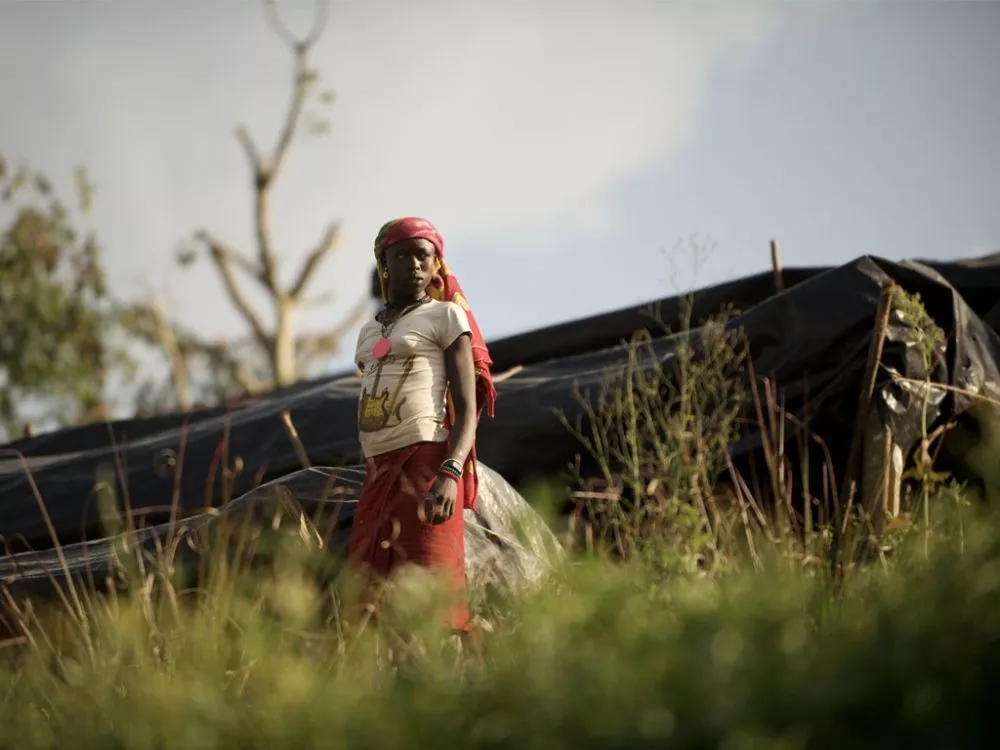
GeishaVillage Coffee Estate is completely different from most Ethiopian farms in that it is not a small farm, but a large farm of 500ha, with its own washing plant and laboratory, located in the southwest near the border with Sudan, and the most special is that the whole farm only grows Rosa varieties, rather than Ethiopian native species that generally cannot be determined. Ruoxia Village divides the farm into eight blocks, with three main Rosa varieties, whose seeds are collected from nearby forests.
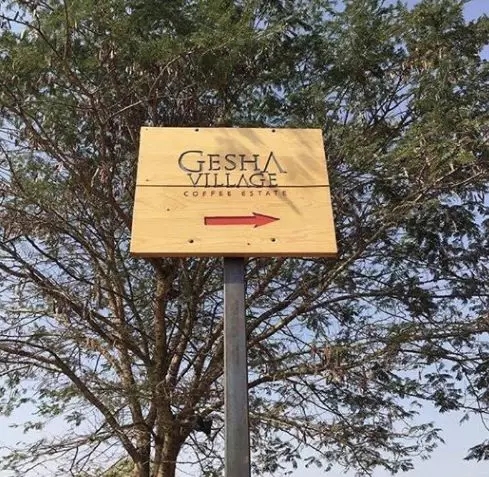
The construction of the farm began in October 2011 and the first harvest in 2015. Due to the enthusiastic response from all parties, they, with the assistance of Panamanian coffee farmer Willem Boot, offered 21 micro-batches in the first international bid held on May 31, 2017, of which 19 were 120kg and the others were smaller. Bidders from Europe, North America, Asia and Australia responded unexpectedly enthusiastically, and the final bid price was $85 / lb, breaking all previous auction prices for African beans!
The terrain in the west of the estate is relatively high, and the elevation of the SHEWA-JIBABU plot is slightly higher, while the shading ratio in the south is relatively higher, and the sun exposure in the north is longer. In the eight plots of the manor, the manor managers choose the most suitable variety for each plot according to the microclimate differences such as elevation, soil conditions and shading conditions, so as to ensure that each plot can form distinct characteristics.
In terms of products, it is divided into bidding batches, gold bid batches, red bid batches, green bid batches and Chaka batches. (of course, these "color codes" are also commonly known in Chinese and come from the background color of the publicity.)
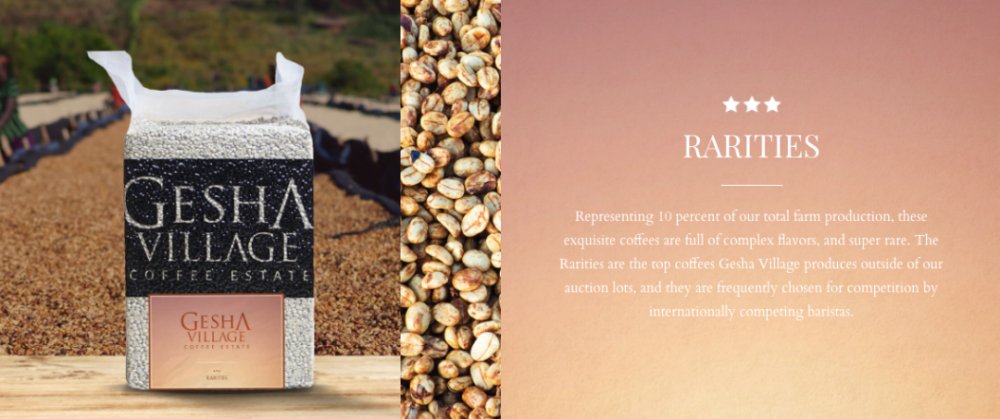
The official name of Jinbiao is "Rarities", which should be translated as "treasures". Anyway, it is the highest quality of non-competitive bidding batches in Rose Xia Village. This series accounts for only 10% of the total output of the estate.
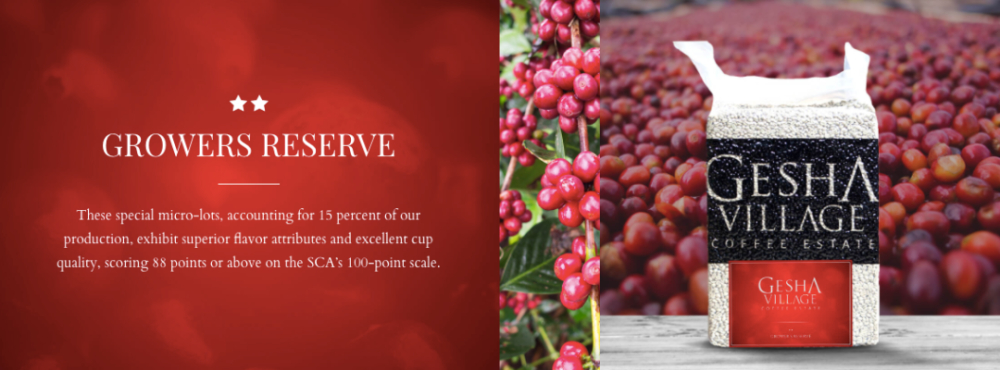
The red mark of Ruoxia Village, officially known as "Growers Reserve", translates to "grower reserve". It accounts for 15% of the total output of the manor and has more than 88 points in the SCA cup test.
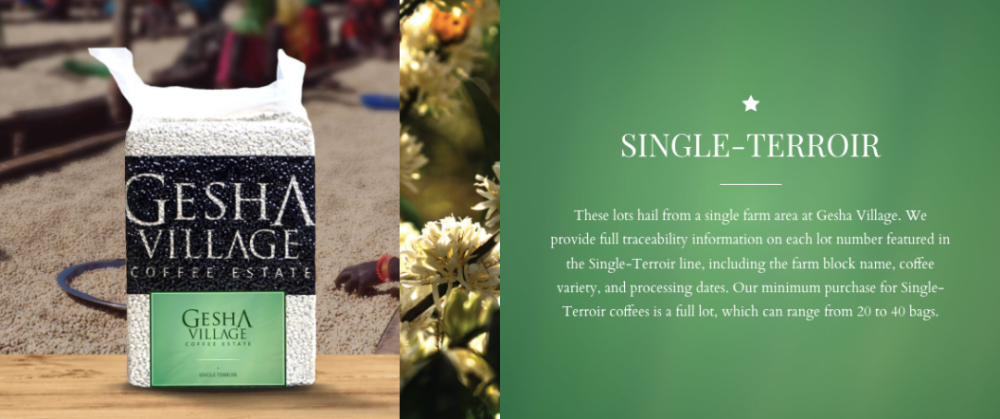
The green sign of Ruoxia Village, officially known as "Single-Terroir", translates to "single land". That is, this series provides fine traceability information that can be traced back to fine single plots, coffee varieties, and processing information and time. A real cup of coffee.
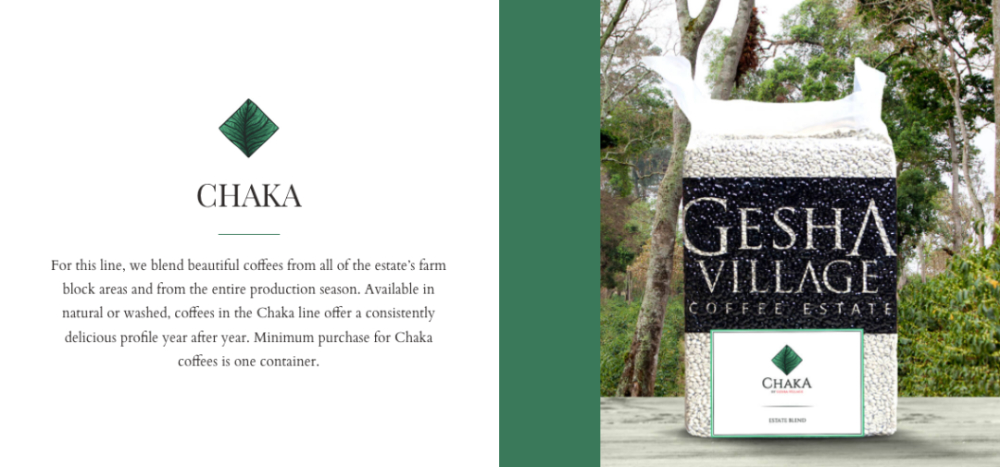
Chaka batches pay attention to the purchase of low threshold, it is the whole estate all the plots, coffee varieties mixed together, no longer emphasize subdivision. It can be said to represent the height of the lower limit of the manor in Rose Xia Village.
Rosa coffee in Ruoxia Village is usually treated in the sun, because the landowner thinks that the hot and dry weather in Ethiopia is very suitable for sun treatment, and the sun-treated coffee beans will show a very sweet flavor.
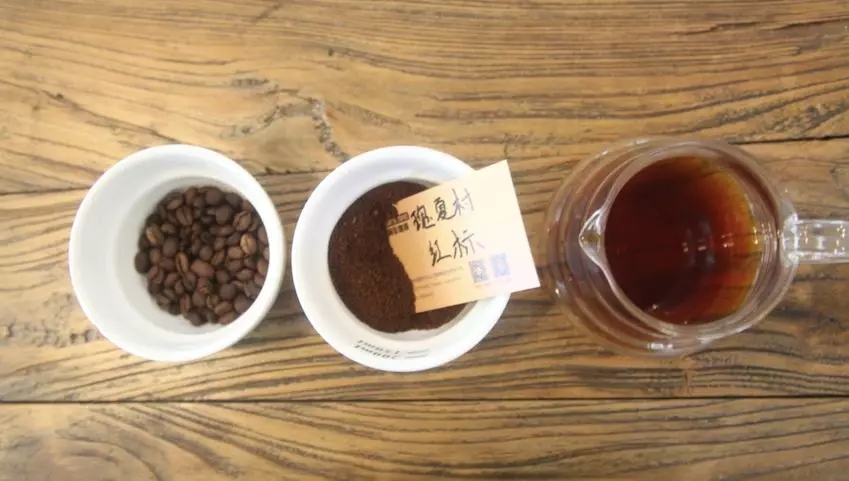
First, the floating impurities are removed, and then the sun is covered with a thin layer of plastic sheeting on the African-style elevated scaffolding. when drying with a tanning bed, it is screened again to pick out worm-eaten beans and coffee beans that are green in color. The total drying time is 18-30 days.
The manor grows coffee varieties.
There are three varieties in Rosa Village, named after the expedition when the coffee was discovered: Gesha1931 and Gori Gesha and Illubabor provided by the Ethiopian Coffee Research Center.
Gesha1931 is confirmed by observing the shape of the plant, the shape and size of the beans, and its cup test that it is the closest female parent to the Panamanian summer. On the other hand, the Gori Gesha heirloom was collected by the owner of Rosa Village through his own expedition in 2011 from the wild coffee forest of Gori Rosa, 20 kilometers from the village farm, and no duplicate samples have been found elsewhere.
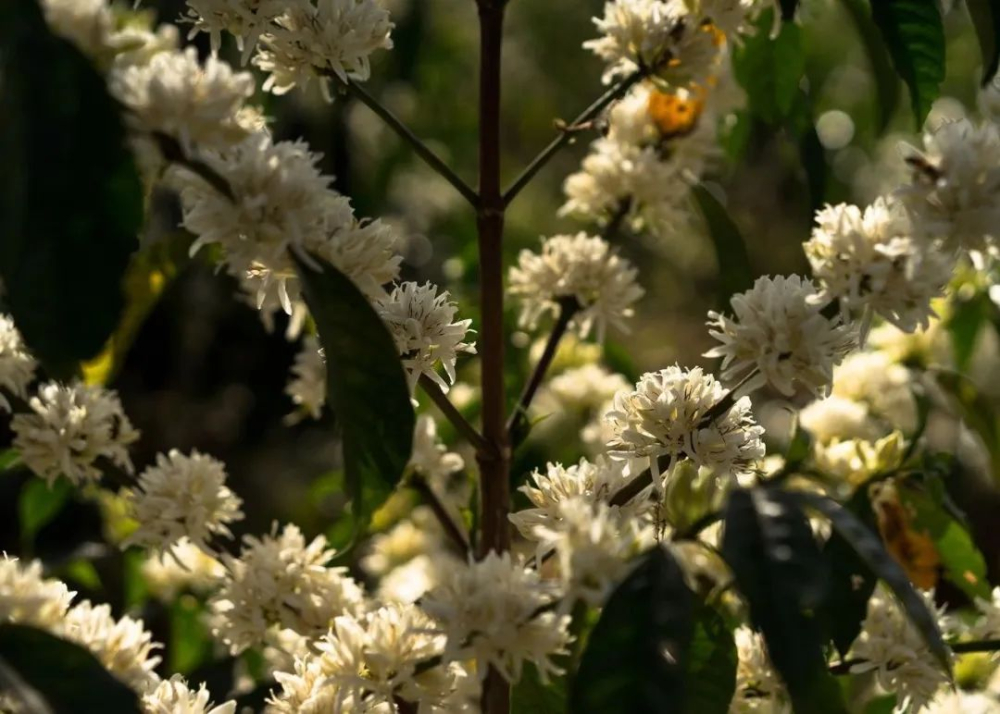
Here in the front street, I would like to make it clear that the rose summer planted in Rosy Village is separated from the total variety of coffee grown in Ethiopia. Although the roots of Panama rose can be traced back to Ethiopia, but after decades of landing in Panama, they have also adapted to the local soil climate, so the performance of Ethiopia is quite different from that of Panama.
Roasting Analysis of Qianjie Coffee
Roaster Yangjia 800N (baking capacity 300g)
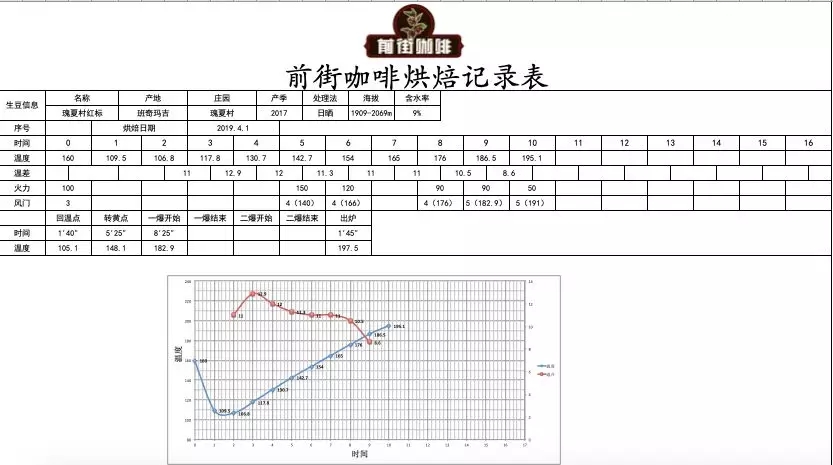
The furnace temperature reaches 160C, the throttle opens 3, the firepower opens to 130C, and the temperature recovery point is 1mm. The throttle opens to 4 when the furnace temperature is 140℃, and the firepower is adjusted to 150. when the furnace temperature is 148.1 ℃, the bean meter turns yellow, the grass smell disappears completely, and enters the dehydration stage, when the furnace temperature reaches 166℃, the firepower drops to 120and the throttle remains unchanged; when the furnace temperature reaches 176℃, the firepower drops to 90, and the throttle remains unchanged.
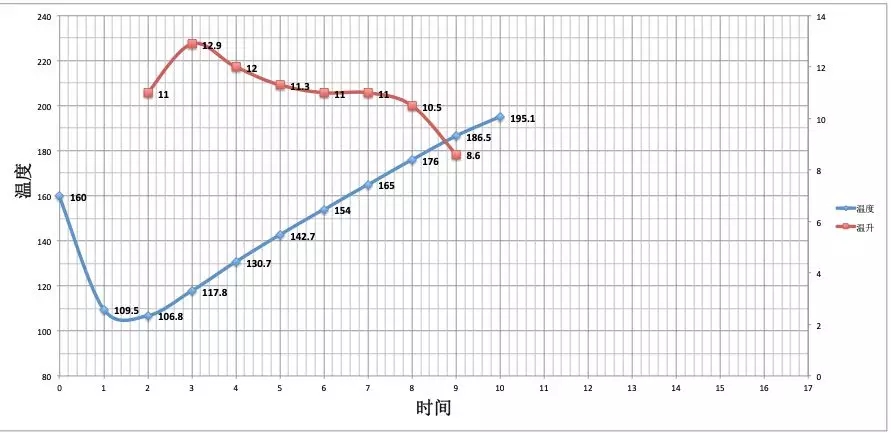
The smell of toasted bread has obviously changed to the smell of coffee, which can be defined as a prelude to an explosion. At this time, it is necessary to listen carefully to the sound of the explosion point. When the explosion starts, the throttle should be adjusted to 5 (the tuning power should be very careful and should not be so small that there is no burst sound). After an explosion, the development of 1 cup 39th 45 ", 197.5 degrees pot.
Suggestion on brewing coffee in Qianjie
Rose summer coffee is so obvious and relatively expensive that it is a bit wasteful without fully flushing out the flavor of rose summer. So we can tailor a set of cooking plan for Rosa.
This cooking uses the red standard Rosa coffee beans from Rosa Village as a demonstration. Here, it is necessary to distinguish between the red sign of Guixia Village and the red sign of Emerald Manor.
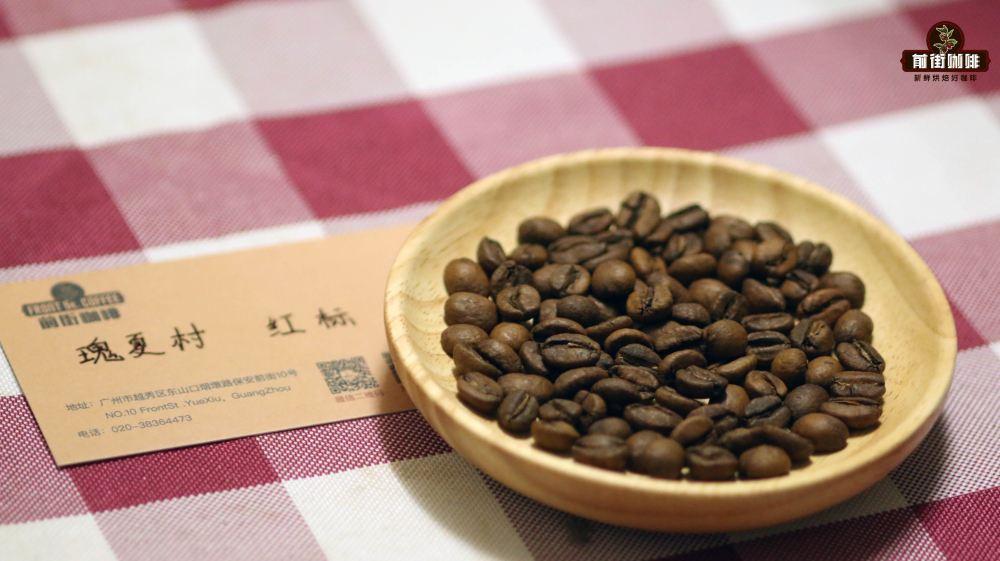
Powder Qianjie still chooses 15g, with Hario V60 small filter cup. The roughness and fineness of grinding will be slightly thicker than that of Qianjie in the past, and the pass rate of No. 20 screen is 78%, mainly because the quality of rose beans is relatively hard, and it is easy to sink to the bottom and plug the sewer hole. Accordingly, when the ratio of powder to water is adjusted to 1:16, on the one hand, one more portion of water is used to maintain the extraction rate of coffee, on the other hand, the coffee concentration is reduced to 1.15% between 1.25%, which is the best concentration to feel the flavor of coffee. In terms of water temperature, maintain 91 degrees Celsius. When brewing, first steam the hot water into 25ml for 30 seconds, because the beans of Rosa are hard and the water absorption effect is not so strong, so the hot water injected into 25ml has basically moistened the surface of the coffee powder, but if you steam it with more water, in fact, the excess water will only fall into the pot. It can be softened when steaming, and a small amount of water flows outward in the middle, so that the effect of stifling water injection is the best.
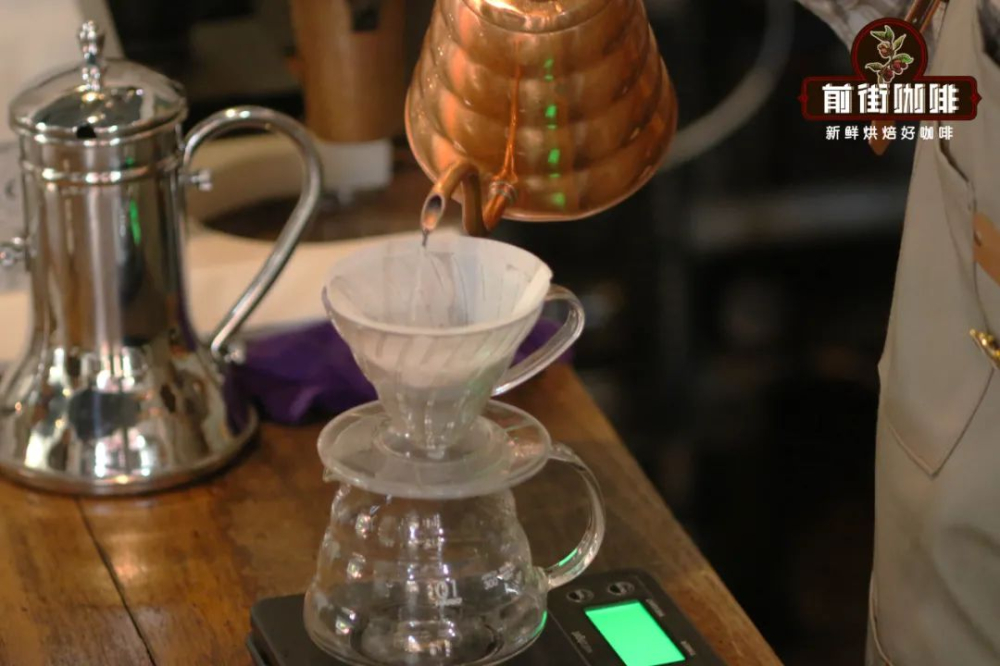
After the end of steaming, enter the second stage of water injection, this stage requires the injection of 120ml water, the middle around the "mosquito-repellent incense" water injection, raising the powder layer. The water injection is finished in about 1 minute. Then wait for the water level to fall. Under normal circumstances, the water level falls at a uniform and slow speed, falling to 1 minute 2 places in about 1 minute 10 seconds-1 minute 15 seconds, forming a "bowl".
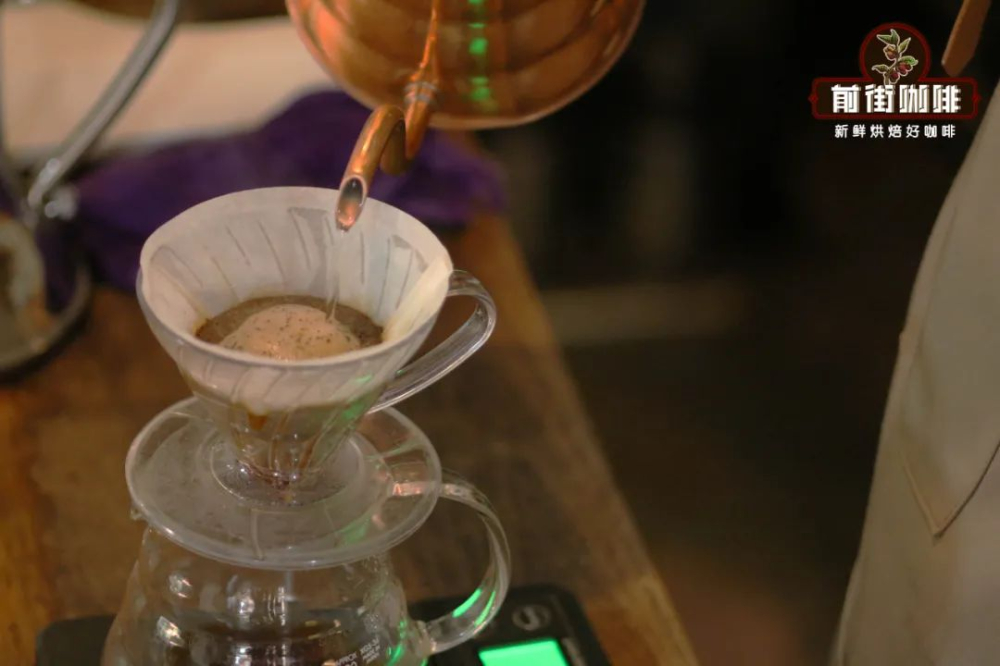
At this time, the last stage of water injection begins, and the amount of water injected into this section is about 1 minute and 35 seconds. The amount of water injected into this section is about 1 minute and 35 seconds around the size of 2 circles on the surface of the water surface. The rest is done when the coffee liquid is dripped into the pot and the filter cup is removed for about 2 minutes to 2 minutes. Ruoxia Village Hongbiao flavor: citrus, berries, cream, tropical fruits fermented sweet.
Important Notice :
前街咖啡 FrontStreet Coffee has moved to new addredd:
FrontStreet Coffee Address: 315,Donghua East Road,GuangZhou
Tel:020 38364473
- Prev
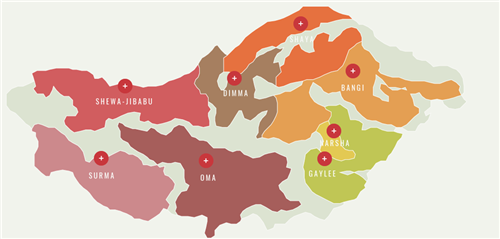
What grade is Rose Xia Village Golden Standard Rose Xia? Flavor characteristics of Ethiopian Golden Standard Rosa Coffee Bean
Professional coffee knowledge exchange more coffee bean information please follow the coffee workshop (Wechat official account cafe_style) END
- Next
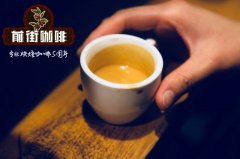
Introduction of Cabana Manor in Colombia description of flavor characteristics of Colombian coffee
The rose summer of Cabana Manor, built in the famous coffee producing area of Huilan Province, Cabana Manor, the annual output of rose summer is only one ton, what is the concept of one ton? at that time, the rose summer I bought was 30kg packaging, that is to say, only 30 sacks a year. I was lucky to get one of the sacks. This Colombian coffee can drink obvious citrus flavor, if baked enough.
Related
- Detailed explanation of Jadeite planting Land in Panamanian Jadeite Manor introduction to the grading system of Jadeite competitive bidding, Red bid, Green bid and Rose Summer
- Story of Coffee planting in Brenka region of Costa Rica Stonehenge Manor anaerobic heavy honey treatment of flavor mouth
- What's on the barrel of Blue Mountain Coffee beans?
- Can American coffee also pull flowers? How to use hot American style to pull out a good-looking pattern?
- Can you make a cold extract with coffee beans? What is the right proportion for cold-extracted coffee formula?
- Indonesian PWN Gold Mandrine Coffee Origin Features Flavor How to Chong? Mandolin coffee is American.
- A brief introduction to the flavor characteristics of Brazilian yellow bourbon coffee beans
- What is the effect of different water quality on the flavor of cold-extracted coffee? What kind of water is best for brewing coffee?
- Why do you think of Rose Summer whenever you mention Panamanian coffee?
- Introduction to the characteristics of authentic blue mountain coffee bean producing areas? What is the CIB Coffee Authority in Jamaica?

